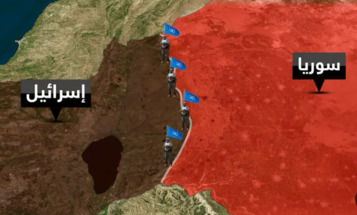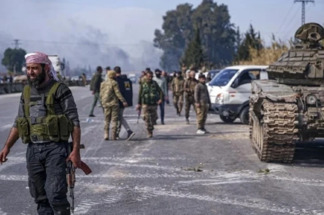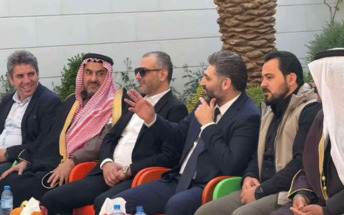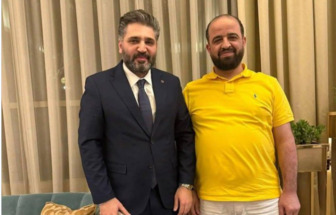-
During the era of Sisi, the conquest of the desert has become a reality, not a dream
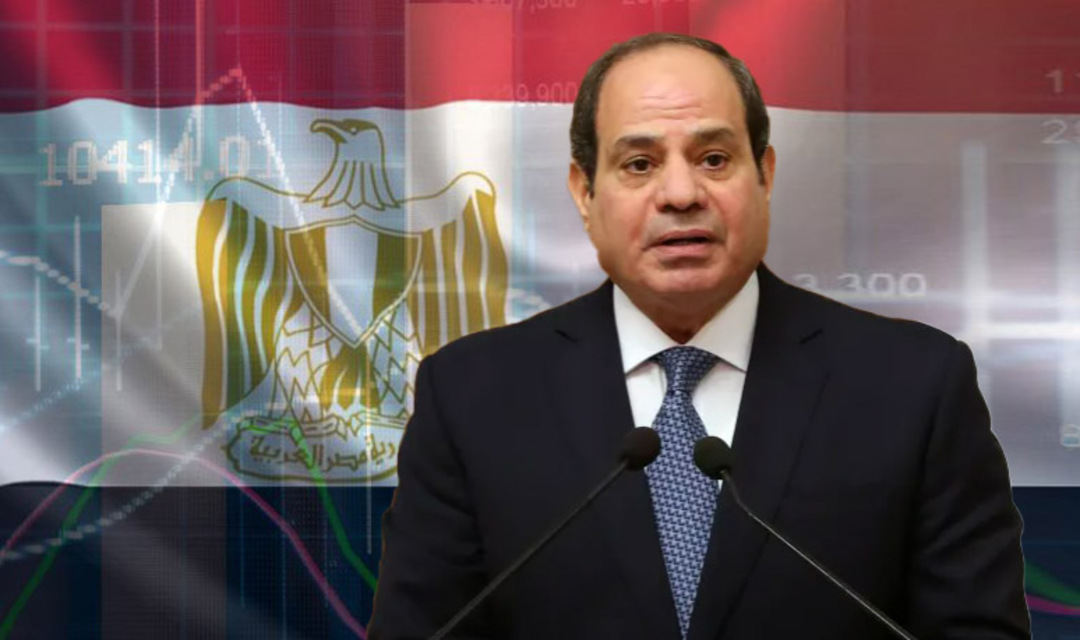
Whoever visits Egypt gets amazed at the size of the achievements that have taken place in the field of infrastructure, such as roads, bridges, transportation and new cities, and is even more surprised at the inability of the Egyptian media to market these achievements and inform the world of this great boom that took place in a few years.
Since President Abdel Fattah El-Sisi came to power in 2013, he has embarked on constructing many major projects such as new cities to provide housing and job opportunities for Egyptians and agricultural development projects to solve the wheat crisis. This is in addition to social and health care projects to overcome the effects of the economic reform process on the poor classes.
In light of the international media ignoring many important achievements and focusing on the negatives resulting from the economic reform process, we find that the Egyptian media itself is unable to inform the world of what has been achieved in Egypt in a short time, whether in the field of economic or social reform. Examples of this are what has been achieved in the field of Women's rights which would not have been achieved in 50 years.
Unfortunately, many media outlets dealt with the achievements made in the field of conquering the desert and building new cities in a negative or biased way and focused on the amount of spending that was made in building these cities, and did not focus on the positive side, which is providing housing, job opportunities and providing food for the Egyptians.
In this report, we review part of what has been achieved in the field of building and reconstructing new cities in Egypt since Sisi came to power
Why Is Egypt Building New cities?
Egypt is building the New cities to create many opportunities for housing and employment, putting in mind that Egypt’s population will almost double in the next 40 years. The goal is also to eliminate the crowdedness that is one of the biggest problems now in Cairo and other cities because of the increasing population. The fertile valley of the Nile that makes 5% of the country is home to 95%of the population. In the 1970s a large area of green land was eaten by the urban growth, so, it was a must for Egypt to conquer the desert in order to redistribute its population .plans were drawn up for new cities in the desert and today Egypt has 22 built or half- built cities, among them are three of the most beautiful cities in Africa and the middle east, the New Administrative Capital, New Alamein City, El Galala City.
The New Administrative Capital
In early 2016, the first phase of construction on the ambitious new capital began on over 700 square kilometers of land. The new capital is located between Cairo and Suez, where it will house parliament, ministries, governmental bodies, the presidential offices and embassies. Moreover, it will enjoy a plethora of facilities including schools, universities, parks, hospitals, clinics, an international airport, a theme park larger than Disneyland, an electric railway that connects to Cairo, solar farms and over 40,000 hotel rooms. Once completed, the new capital is expected to attract over five million residents.
The new capital will also house a 0.5 square kilometer central business district, which will be financed and built by the China State Construction Engineering Corporation (CSCEC) creating investments expected to be valued at over US$ 3 billion. The central business district will include a 345-meter high skyscraper, the would-be highest building in Africa, twelve business complexes, five residential buildings and two hotels.
The CSCEC construction of the new business district is run by a private special purpose vehicle with shareholders including the Egyptian New Urban Communities Authority and the Armed Forces.
New Alamein City
Land for constructing the New Alamein City was allocated earlier this year. This new city is located on the coast of the Mediterranean Sea where many tourist resorts and gated communities already exist. It is a popular destination for local tourism but this new project aims at internationalizing its appeal and making it accessible for all sectors of Egyptian society.
The New Alamein City is not only going to be a tourist hub but a complete urban center that stretches over 200 square kilometers and can house over 400,000 inhabitants. From a tourism perspective, once complete there is expected to be 25,000 hotel rooms which includes three new hotels being operated by Marriott International.
El Galala City in El Ain El Sokhna
El Galala City is part of the government’s plans to expand its tourist attractions as well as its urban living spaces to presently unpopulated areas. El Galala Mountain is located on the Red Sea between El Ain El Sokhna and El Zaafarana and construction has already begun on the project, which is planned to extend to approximately 70 square kilometers. It is expected to be a prime tourist destination with many resorts and tourist villages and a city, which links the New Administrative Capital to the Red Sea governorates.
We now consider the legal framework that regularizes these important real estate developments.
Legal Framework
The primary legislation is the Investment Law No.72 of 2017 (the “Investment Law”) (and specifically Article 37 and 58 and as further stipulated in Article 47 of the accompanying Executive Regulations),which provides that the properties required for investment projects shall be disposed through one of the following means:
Sale;
Rent;
Rent to own; or
License to use, where the license to use or lease is only valid for a period that does not exceed 50 years.
The Investment Law requires that the transfer of ownership, in case of sale or rent of properties, be conditional upon the full price payment. Moreover, the competent administrative authority, may participate in the investment projects conducted, with the property being an in-kind share or through a partnership in the cases determined by a decree issued by the Cabinet of Ministers (under Article 58).
The Executive Regulations (Article 48) details that this participation could take the form of either:
a Public-Private Partnership (PPP);
a Long-Term Partnership;
a Build, Operate, Transfer (“BOT”);
a Build, Own, Operate, Transfer (“BOOT”); or
a Revenue Sharing Partnership
Pursuant to the Investment Law and its Executive Regulations, a database shall be created (and updated every 6 months) in order to comprise a list of these properties, their sizes, established heights as well as estimated price, and the method of disposal. The process of land allocation is conditional upon the approval of the Egyptian Cabinet of Ministers and the President of the Republic issuing a decree. This decree shall transfer the title and jurisdiction of the property from the administrative body which has jurisdiction, to the General Authority of Free Zones and Investment (GAFI) for the purpose of executing the investment plan and disposing of the property according to the provisions of the Investment Law.
It is noteworthy that the provisions of the Investment Law currently allow for a dual route to obtaining property from the government. One way is to obtain property directly from the competent administrative authorities and the other is to deal with GAFI, whereby the property would initially be transferred to GAFI and then onto the investor. This serves to allow more flexibility to the investor in terms of deciding which path would be more convenient. This flexibility was not available prior to the introduction of the Investment Law. Previously, the only path for the investor was to seek land allocation through the competent authorities, which often led to additional bureaucracy dealing with several authorities and their respective requirements. The new arrangements also ensure that GAFI, a national body for investments, allocate disposition of land and property according to a wider vision for the economy.
Requirements and Conditions
In cases where the investor requires a privately state-owned property (purchased by the state but not deemed to be public land) the Investment Law requires the investor to indicate such requirements in its application, by specifying the purpose, size and location of the desired property. Moreover, for purposes of development, in certain circumstances, the Investment Law allows for the free disposal of private state-owned properties to investors in areas specified by Presidential Decree. In order to qualify , the investment projects must meet technical and financial criteria,which are set by virtue of a decree issued by the Cabinet of Ministers (as distinct from the above mentioned Presidential Decree). This free disposal of properties is conditional upon the investor providing a cash guarantee not exceeding 5% of the overall cost of the investment project.
In particular, according to the Executive Regulations, where it concerns an activity involving production, the investor shall provide a cash guarantee representing 1% of the overall cost of the investment project. Where the activity concerned involves services, the investor shall provide a cash guarantee representing 3% of the overall cost of the investment project. Finally, where the activity concerned involves storage, the investor shall provide a cash guarantee representing 5% of the overall cost of the investment project. This guarantee shall be refunded after three years from the actual commencement date of activities, provided that the investor complies with the conditions of disposal.
Pricing and Selection Criteria
The Investment Law stipulates that investors or investment projects are chosen according to a points-based system, ranking projects based on preference principles according to technical or financial specifications, or based on the value of the bid. In particular, the Executive Regulations (Article 51) stipulates that these points be calculated according to:
The investor’s previous experience;
The investor’s international standing;
The project’s ability to generate foreign currency, either by exporting products or by providing a local substitute for imported products;
Projected investment costs;
The value of the bid and payment method
In the event that the bid process is close (with little to chose between tenderers), the value of the bid takes precedence during the decision-making process. Furthermore, the Investment Law (Article 64) requires that any price estimation for the value of the properties, be it for sale, rent, or for other uses, shall be conducted by one of the following:
The General Authority for Governmental Services;
The Higher Committee of State Land Pricing in the Ministry of Agriculture;
The New Urban Communities Authority;
The General Authority for Tourism Development; or
The General Authority for Industrial Development
The enumeration of high standards in pricing and decision-making raises confidence in the transparency of the process and prevents potential legal battles concerning misallocation, bribery or profiteering. When the process is fair and transparent, investors are more confident and willing to enter a bid knowing that there will not be any foul play.
The involvement of the abovementioned authorities shall vary according to the nature of the project. Following the decision of the relevant authority’s Executive Officer, in addition to the approval of the competent Minister, the Investment Law and the Executive Regulations prescribe for the creation of one or more committees. The committee(s) include technical, financial, and legal teams. The seniority and expertise of the committee(s) correspond with the significance and nature of the projects under consideration.
Conclusion
The number of projects currently in the pipeline should spur Egyptian economic growth in a sustainable way and put the government’s resources to efficient use. These projects are accompanied by a set of laws that make it significantly easier for investors to do business and participate in the national projects. One of the more important reasons the government has established these mega projects is not simply to expand foreign investment but also allow for the creation of living space outside the confines of Greater Cairo, which is becoming increasingly dense.
BY: Gaber Haider
You May Also Like
Popular Posts
Caricature
BENEFIT Sponsors BuildHer...
- April 23, 2025
BENEFIT, the Kingdom’s innovator and leading company in Fintech and electronic financial transactions service, has sponsored the BuildHer CityHack 2025 Hackathon, a two-day event spearheaded by the College of Engineering and Technology at the Royal University for Women (RUW).
Aimed at secondary school students, the event brought together a distinguished group of academic professionals and technology experts to mentor and inspire young participants.
More than 100 high school students from across the Kingdom of Bahrain took part in the hackathon, which featured an intensive programme of training workshops and hands-on sessions. These activities were tailored to enhance participants’ critical thinking, collaborative problem-solving, and team-building capabilities, while also encouraging the development of practical and sustainable solutions to contemporary challenges using modern technological tools.
BENEFIT’s Chief Executive Mr. Abdulwahed AlJanahi, commented: “Our support for this educational hackathon reflects our long-term strategic vision to nurture the talents of emerging national youth and empower the next generation of accomplished female leaders in technology. By fostering creativity and innovation, we aim to contribute meaningfully to Bahrain’s comprehensive development goals and align with the aspirations outlined in the Kingdom’s Vision 2030—an ambition in which BENEFIT plays a central role.”
Professor Riyadh Yousif Hamzah, President of the Royal University for Women, commented: “This initiative reflects our commitment to advancing women in STEM fields. We're cultivating a generation of creative, solution-driven female leaders who will drive national development. Our partnership with BENEFIT exemplifies the powerful synergy between academia and private sector in supporting educational innovation.”
Hanan Abdulla Hasan, Senior Manager, PR & Communication at BENEFIT, said: “We are honoured to collaborate with RUW in supporting this remarkable technology-focused event. It highlights our commitment to social responsibility, and our ongoing efforts to enhance the digital and innovation capabilities of young Bahraini women and foster their ability to harness technological tools in the service of a smarter, more sustainable future.”
For his part, Dr. Humam ElAgha, Acting Dean of the College of Engineering and Technology at the University, said: “BuildHer CityHack 2025 embodies our hands-on approach to education. By tackling real-world problems through creative thinking and sustainable solutions, we're preparing women to thrive in the knowledge economy – a cornerstone of the University's vision.”
opinion
Report
ads
Newsletter
Subscribe to our mailing list to get the new updates!

